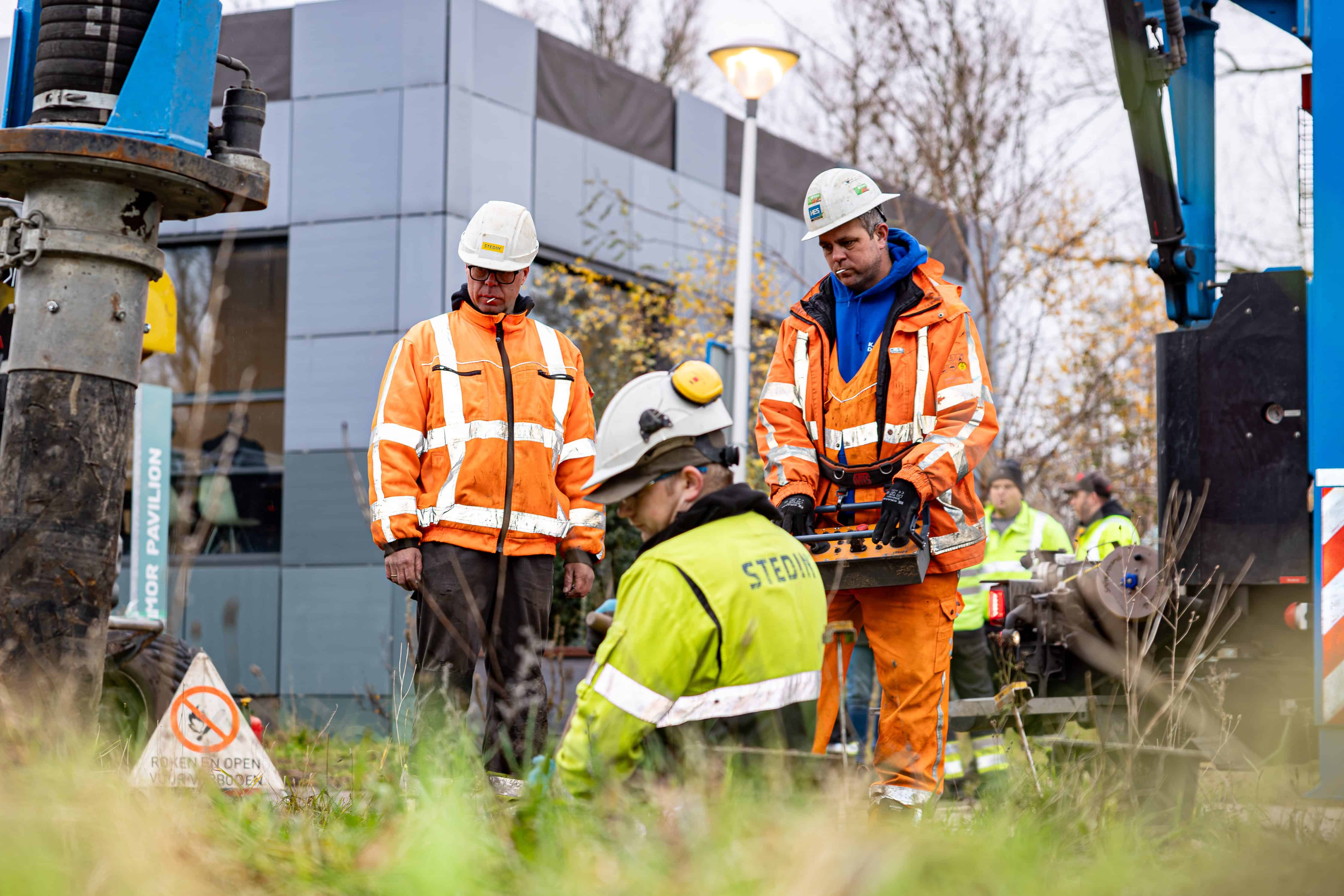
Walking around the terrain of the Delft University of Technology (TU Delft) campus, one can’t help but notice a plot of land with different architecture. Wooden buildings stand out, sitting next to the dark glass conference hall. In the nearby canal, two workers are working on a floating house. A tiny windmill spins next to a banner that reads The Green Village.
Why this is important
Nurturing innovation also involves giving startups and disruptors a physical space to test and experiment. The Green Village within the TU Delft campus is certainly one such space in the Netherlands where innovators test, grow, and connect.
The Green Village is a field lab of the TU Delft. Innovations have a space to be tested in real-life conditions. As a village, it is also home to 13 residents who live in houses equipped with innovative energy systems, green roofs, and disrupting water management solutions. As a field lab, there is room for innovation in every corner of it. One who strolls around the village can undoubtedly feel a good dose of buzz.
The field lab started in 2017 and has a solid track record of tested innovations. The village works on three main themes: sustainable building and renovation, a future energy system, and a climate-adaptive city. Lidewij van Trigt, the project manager for energy transition, took IO on a tour of some of the village’s live energy innovations. “Here, we are open to any initiative that wants to improve sustainability in the built environment,” she states as the visit starts.
Co-creation and innovation
Walking from HittePlein – the “heat square” where heat stress adaptation innovations are showcased – a fenced area appears. Safety signs hanging on the iron net and blue cylinders signal a hydrogen facility. The three main network operators in the Netherlands—Alliander, Enexis Groep, and Stedin—built a conventional natural gas grid on campus to research possible hydrogen applications. The facility has been active for nearly four years now.
“It was an important learning process for us; there were no rules for hydrogen applications in the built environment. Now, the grid companies still use this facility to train their workers on how to work with hydrogen,” Van Trigt explains. With no law existing for the use of hydrogen in the built environment, The Green Village team and the companies helped authorities create rules.
Although most projects stay in the village for a few months, those considered useful for longer remain, such as this hydrogen connection and a building designed by a cohort of students competing in the Solar Decathlon a few years ago. The house—a prototype for future housing solutions—is now an extra space for meetings and events within the village.
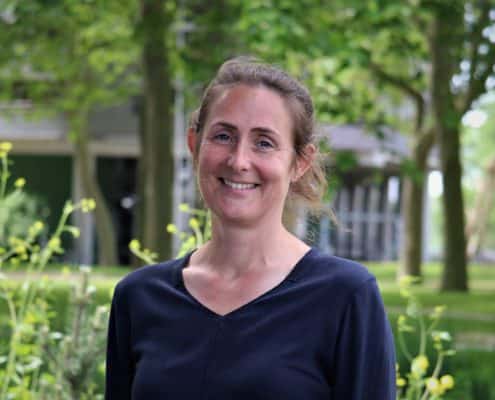
Lidewij van Trigt
Project manager
She focuses on energy transition projects being carried out within the village.
Rules
In telling the village’s story, Van Trigt underlines the uniqueness of the field lab, which has extra room to experiment. “Rules here are less strict to allow us to test things,” she explains. An example is a recently built circular bridge made with recycled concrete and porcelain. Such new materials are not (yet) allowed in real-life building projects.
The Green Village is a proper match-making hub. Innovators find a place to test their ideas and connect with companies. Despite a general openness to new projects and a looser law setting, the field lab has strict rules. “Every experiment must add value, and most importantly, it must address some relevant research questions. Not all ideas are a good fit for the village. Still, we always try to connect to some other player – be it a company or another research cluster – to bring that idea forward,” the project manager underlines.
Clean energy at all times
Next to the hydrogen grid control station, there is room for another project, which is still being assembled. It’s the 24/7 Energy Hub, an experiment for hydrogen to provide clean energy at all times. A grey box contains several cylinders where to store the hydrogen generated by the connected electrolyzer – a device that uses electricity to split water into oxygen and hydrogen. In turn, the electrolyzer gets power from the soon-to-arrive solar panels mounted on top of the box.
Van Trigt: “In this experiment we want to test the feasibility of storing solar energy and converting it into hydrogen from summer to winter. This installation has a capacity for sixty kilograms of hydrogen, which is more than enough to power the student house in the village.”
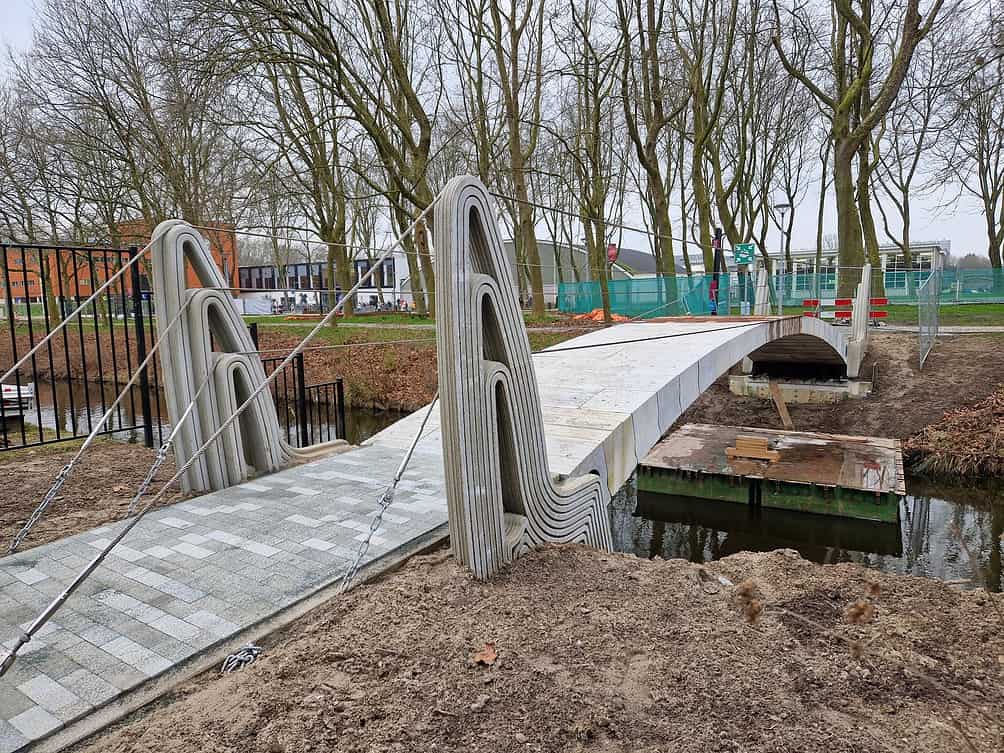
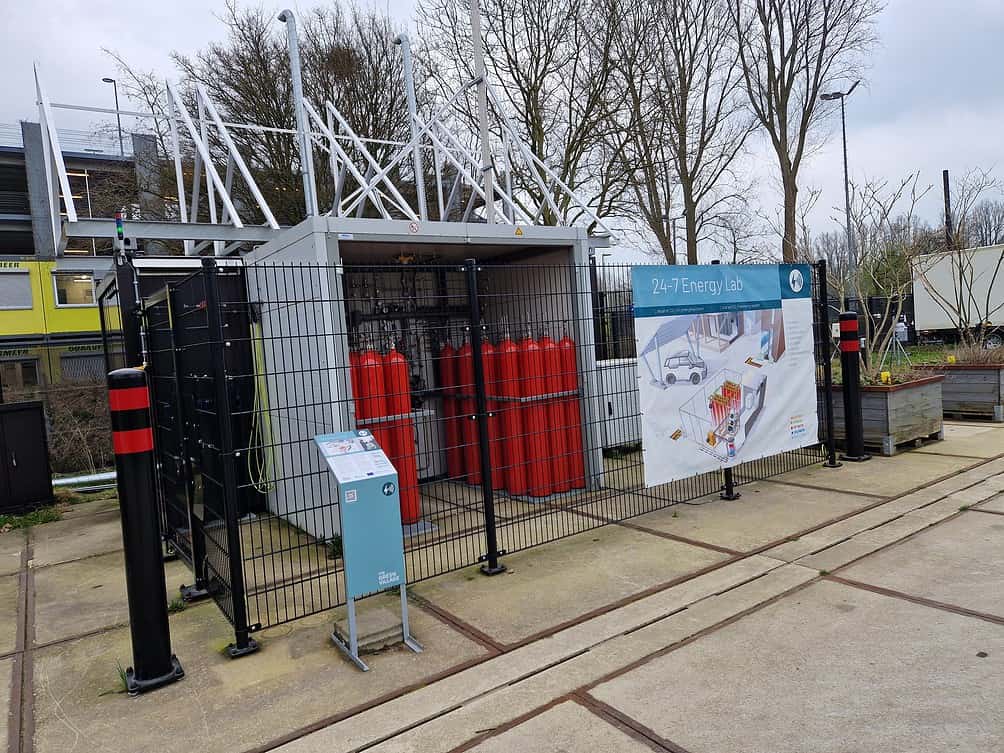
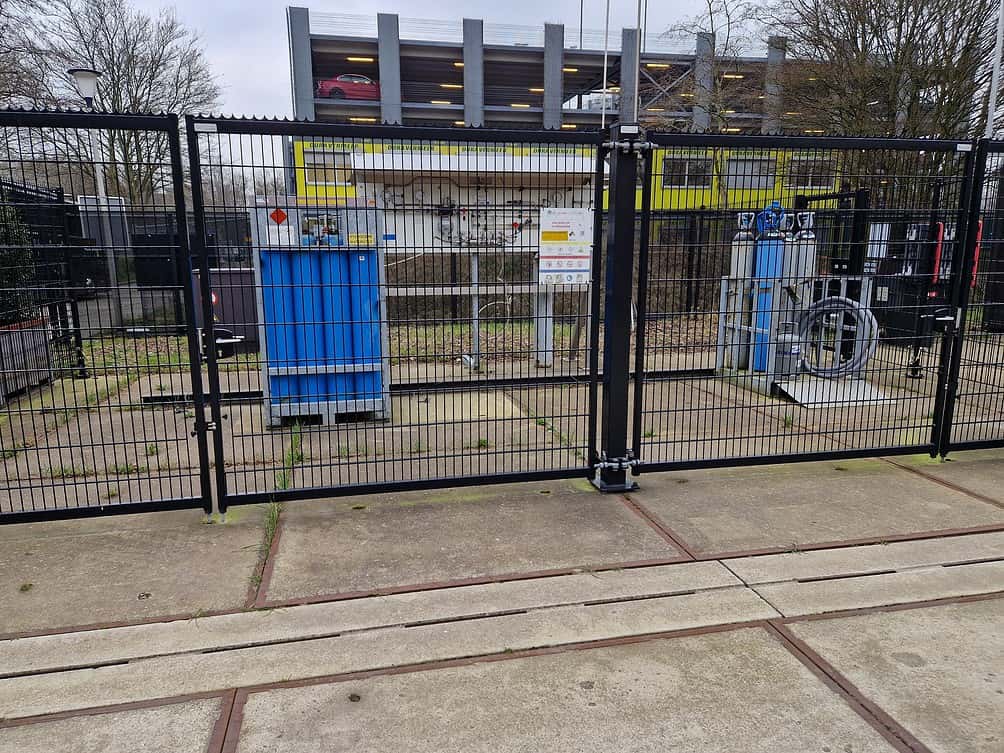
Retrofitting
Whereas building better in the future is certainly important, testing innovation on what already exists is equally crucial to enabling a just transition. Yet, a block with three typical Dutch houses from the 1970s stands out in a place full of forward-looking dwellings. The three units—built a few years ago but with the materials and standards of fifty years ago—are a snapshot of the country’s building stock. Testing cutting-edge innovations on them takes on a special significance.
One of the innovations being tested is Go-Zon. The system is an energy hub that features photovoltaic thermal hybrid (PVT) panels, a heat pump, and the heat grid itself. During the warmer periods of the year, heat from PVT panels goes to the grid and is used for tap water. The system also features a waterbuffer. In wintertime, the heat pump draws heat from the district heating grid, and in intermediate seasons, the heat pump works efficiently due to the availability of the warm water buffer. “The main focus of the experiment is testing the connection between the different elements of the system and the separations between district heating and indoor installations,” explains Van Trigt.
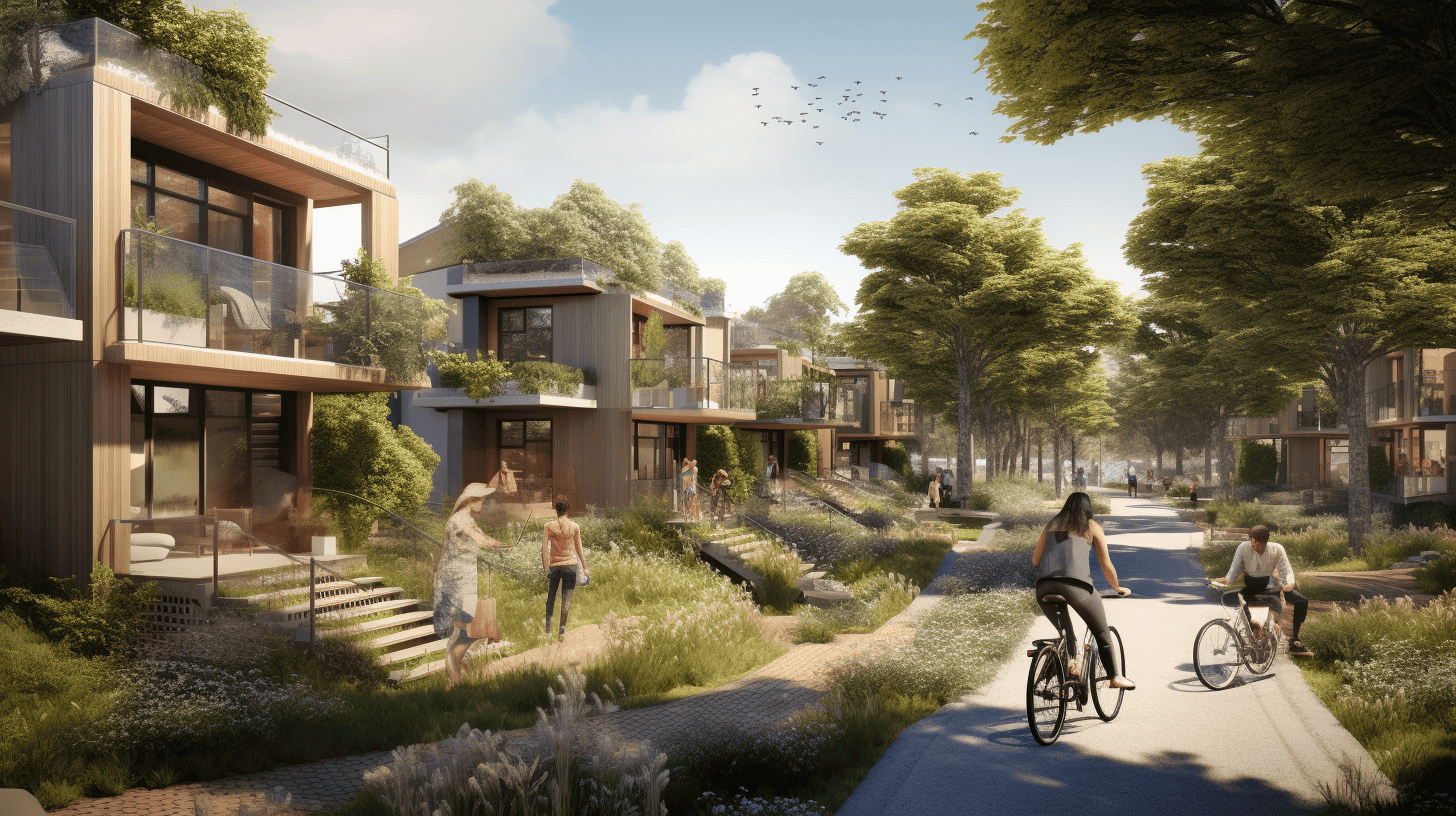
Ever evolving
Groups of visitors get a guided tour of the different projects while construction workers lay underground a system to help the soil breathe more. Whereas bringing projects on board was difficult at the very start of The Green Village venture, the trend is now the opposite. “Companies, researchers, and innovators are now coming to us. They see the value of entering this ecosystem,” says the project manager.
The influx of innovations is now continuous, with projects coming and going. One winter, there might be hydrogen to heat buildings, and the following one, solar heat stashed during summer months, might provide the necessary power for the year’s colder months. The Green Village staff’s office space is a place to experiment, too.
The village made a name for itself. Throughout the years, innovators of any sort had a chance to test their technology. An example is supersola, the plug-and-play solar panels manufacturer that conducted a pilot between 2020 and 2021. Its solar models are now available to buy on electronics retailer CoolBlue. For sure, for the uniqueness of its ecosystem, The Green Village became a place to be for many. And in six months, it might look completely different.

